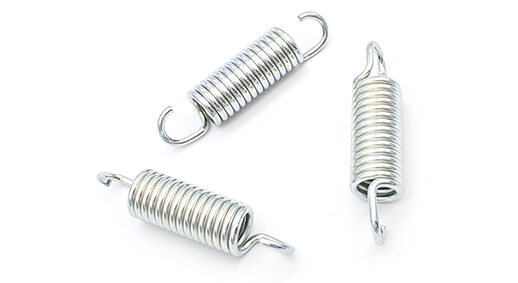Get unique, complex parts easily. No matter your requirements, Chaoyi Spring creates hard-to-produce coil springs and wire forms.
Let us help you create the custom wire form you need, from S-hooks and J-hooks to utility hooks and more.
We work closely with customers across a wide range of industries, helping them design and manufacture made-to-order parts.
Why choose Chaoyi Spring? We prioritize customer-focused collaboration, modern equipment and the latest technology to make your parts per print.
Find the information and guidance you need, from measuring a spring to learning about materials, placing an order and much more.
Navigating the world of torsion springs can feel like entering a labyrinth of technical jargon and complex specifications. But don't fret! This comprehensive guide will equip you with the knowledge


Navigating the world of torsion springs can feel like entering a labyrinth of technical jargon and complex specifications. But don't fret! This comprehensive guide will equip you with the knowledge and tools you need to confidently select the perfect torsion spring for your application. We'll break down the essential aspects of torsion spring size charts, offering insights into their function, reading, and application. By the end of this guide, you'll be well-versed in torsion spring sizing, empowered to make informed choices for your specific project.

Torsion springs, unlike their compression and extension counterparts, operate by twisting or rotating. They store energy through this rotational deformation and release it when allowed to unwind. This unique function makes them essential components in various mechanical systems, from door hinges and garage doors to automotive suspensions and countless other applications.
Torsion spring size charts are crucial for selecting the right spring for your specific needs. They provide a systematic way to match your application's requirements with the appropriate spring dimensions, ensuring optimal performance and longevity. Imagine trying to open a heavy door with a spring that's too weak—it wouldn't budge! Or, conversely, using a spring that's too strong—it could potentially damage the hinges. Torsion spring size charts help avoid such scenarios, ensuring the right balance for smooth, efficient operation.
Torsion spring size charts typically include a wealth of information, but the most critical parameters to understand are:
1. Identify Your Needs: Carefully analyze your application. What is the desired rotational force? How much space is available for the spring? What are the operating conditions, including temperature and environmental factors?
2. Consult the Chart: Look for a chart that aligns with the type of torsion spring you need (e.g., extension, compression, or torsion). Refer to the column headings and carefully consider the parameters mentioned earlier.
3. Find a Match: Based on your application's requirements, locate a spring that matches the desired wire diameter, coil diameter, spring rate, and material. It's essential to factor in safety margins and potential overloads, so selecting a slightly stronger spring might be prudent.
4. Verify Compatibility: Ensure that the selected spring is physically compatible with your application, considering factors like the available space and mounting requirements.
While torsion spring size charts provide invaluable guidance, additional factors can significantly influence the spring's performance and lifespan:
Torsion spring size charts are invaluable resources for engineers, designers, and anyone involved in selecting springs for various applications. By understanding the key parameters, consulting the chart effectively, and considering additional factors, you can ensure the selection of a torsion spring that perfectly matches your project's needs, resulting in efficient, reliable, and long-lasting performance.
With this newfound knowledge of torsion spring size charts, you're well-equipped to confidently navigate the world of torsion springs. Remember, selecting the right spring is crucial for the smooth and efficient operation of your mechanical systems. Don't hesitate to seek guidance from spring manufacturers or experienced professionals for complex or critical applications. Happy spring-ing!
Browse some of the custom wire forms and springs that we manufacture. Don’t see what you need? We specialize in made-to-order products that meet your application requirements.
Visit Our GalleryNeed a custom wire form or coil spring? We make it work. Fill out the contact form and a representative will respond within 1 business day. If you have a PDF or CAD file, you can submit to request a quote.